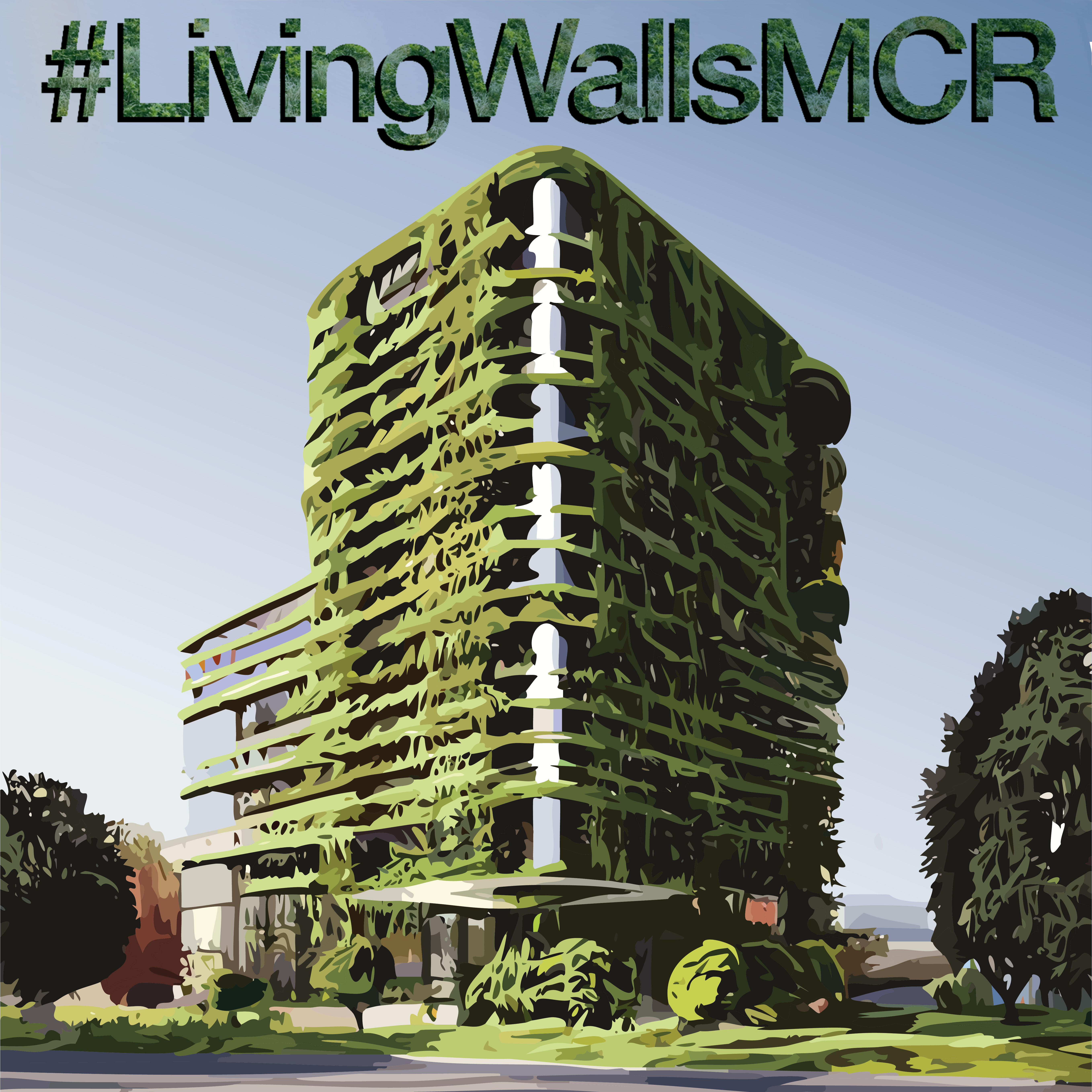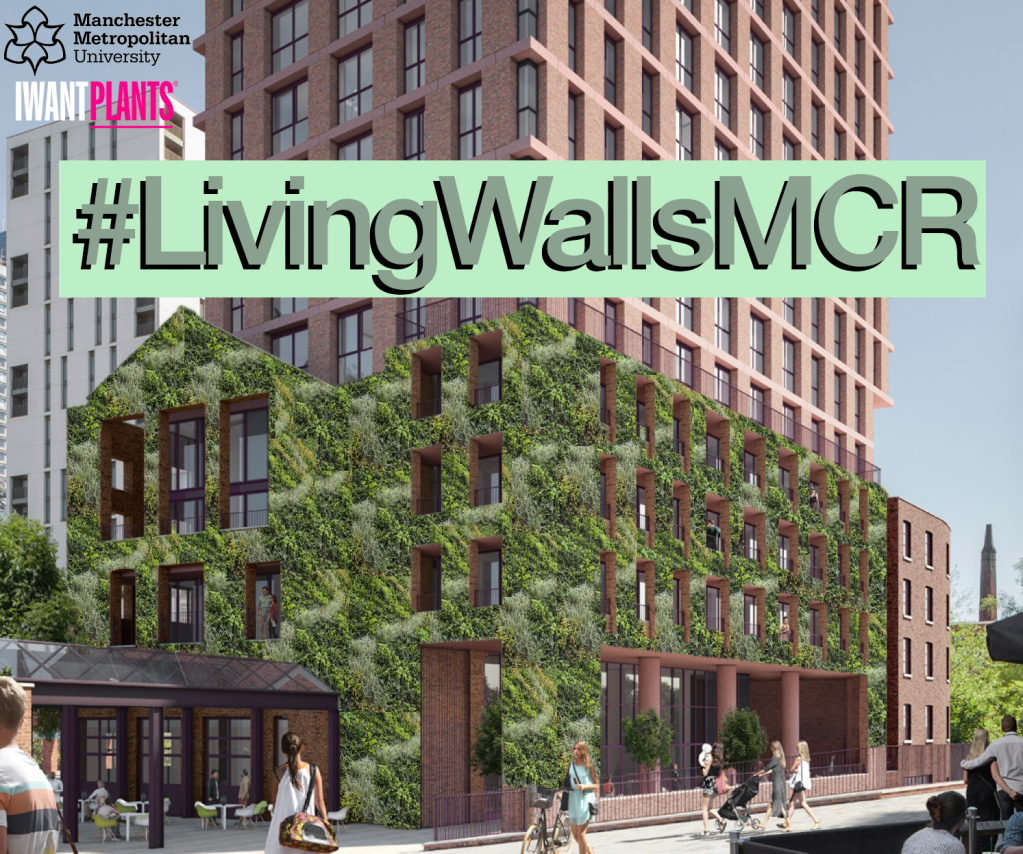
Image render of Hotspur Press proposed building plans, with HYVERT Living Green Wall, (Render by Hodder & Partners)
Strolling through the streets of Manchester City Centre, either side of you sits rows of grey, beige and red brick buildings with the odd skyscraper piercing through the clouds. In a thriving and ever-growing city public health and the environment should be the top priority for our council.
However, the dangerous levels of air pollution in some of the busiest areas of the city demand immediate action. Creating more green space around the city is also becoming a challenge with the population growth. While the council aims to plant more trees and orchards, it needs a more viable plan to tackle air pollution in central locations. Let’s hope that the necessary actions are taken to create a healthier and greener future for Manchester.
Plans have been approved to convert some of the historic mills and press houses in the region into living spaces. One of these buildings is the Hotspur Press on Whitworth Street West, which could be transformed into a 35-storey skyscraper with over 500 rooms for students. Although this conversion may seem innovative, it will only worsen Manchester’s air pollution problem as it adds more accommodation to the city.
According to a source from the Department for Levelling Up, Housing and Communities, housing construction seems to be taking priority over environmental concerns. The old Crimble Mill buildings, some of which have Grade II listed status, are situated within green belt land towards Heywood. “It came up in a meeting with leaders of the department, there was a debate about building within the greenbelt, but it was dismissed pretty much straight away. The plans are for nearly 250 residential units, you can only imagine how much pollution that’ll cause in the area.” Adding that the attitude of people higher up in the department “don’t think too much about the environment, they just want the housing to be built, as quick as possible”.
If there is no option but to renovate the region’s disused mills they should include Living Green Walls, rather than succumbing to the fate of becoming another skyscraper in Manchester’s skyline.
Working in partnership with Manchester Metropolitan University, I Want Plants have created a living laboratory overlooking one of Manchester’s busiest roads, Mancunian Way. The site monitors the levels of pollution in the air while measuring the living wall’s performance on other factors like thermal insulation and biodiversity.
Research and developer for I Want Plants, Joseph Rouse explained to me how living walls work to purify the air: “Imagine the wall as a sponge or really textured surface, when the wind circulates through the leaves of the wall, tiny dust particulates get trapped”. Adding that surface area is one of the determining factors for how effective a wall is at filtering the air: “If you’ve got more things sticking out with a higher surface area, there’s more chance of those pollutants getting trapped, when compared to a flat wall with a smooth surface”.
Currently, on the market, there are a few different types of living green walls, each with its pros and cons. Living walls can range from lightweight English Ivy walls, usually mounted to a trellis growing from the bottom of buildings, Joseph explained: “They’re good, but you can’t really control what they’re doing, and they can take years to actually grow up. If you need the wall fast, on the side of a massive building, it needs to be made in a more engineered way, and that’s what we do”. The modular HYVERT system that I Want Plants have developed makes use of recycled car battery housing and is “essentially a big case filled with soil and plants, they can be a bit heavier and require a bit more maintenance, but they provide more benefits”.
Working with Manchester Metropolitan University, I Want Plants has developed a smart watering system for the wall, that’s been running entirely on rain and recycled water for the past 10 weeks. “We collect all of the water that comes out and then filter it, so it hasn’t used any mains or fresh water during that time at all”.
But purifying air and recycling water are just a few of the benefits that can be reaped from living green walls. Using sensors embedded into the wall, they have been able to monitor air and water quality, along with air flow rates and even levels of biodiversity in the wall. In the second part of the company’s knowledge transfer partnership, they aim to use the data they have collected to make predictions on how the walls will operate, “we’re looking to synthesise a lot of the data, then by incorporating some machine learning artificial intelligence we can start some predictive modelling of what the wall’s actually doing.”
Although living walls don’t have the same environmental impact as large park areas, they have many other beneficial properties, including thermal insulation by protecting building exteriors from direct sunlight.
Speaking about some of the company’s other clients, Joseph explained the benefits of retrofitting living walls to older buildings. “We have a site in Altrincham part of a council-backed, public and privately funded partnership for a 375m2living wall, wrapped around an old building. You save loads of embodied carbon by not ripping the building down and building a new one which would use loads of different claddings, that usually with a high embodied carbon. Instead, you can cover it with plants. Including all of the energy and resources used to grow the plants, the amount of carbon saved should be amortised in around 6-7 years including the energy saved from heating the building. After that time it will start to offset all of the carbon used to create, grow and maintain the plants.”
Despite them being relatively new technology, living green walls emerge as a piece of transformative technology with numerous benefits for public health and the environment. With more advanced living wall technology like HYVERT, the species of plants used, and the substrate can be changed to optimise performance to meet the needs of that area.
Our historic mills, once pioneers of the Industrial Revolution, could now become symbols of sustainability while breathing life into Manchester’s skylines. But for this vision to become a reality, we need your support. Sign our petition for Manchester City Council to incorporate living green walls into the Urban Green Infrastructure plan, doing so will contribute to a healthier and more vibrant city that embraces innovation and cares for the environment.
Let’s sow the seeds of change and cultivate a greener and cleaner future for Manchester. Sign the petition and be a part of the Living Wall Revolution.
Sign our petition to Manchester City Council: https://chng.it/JWxBbvxmt6


Leave a comment